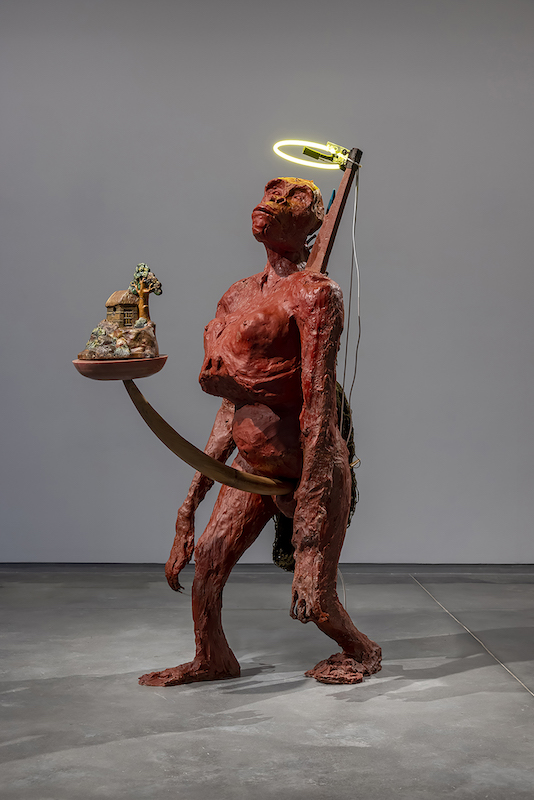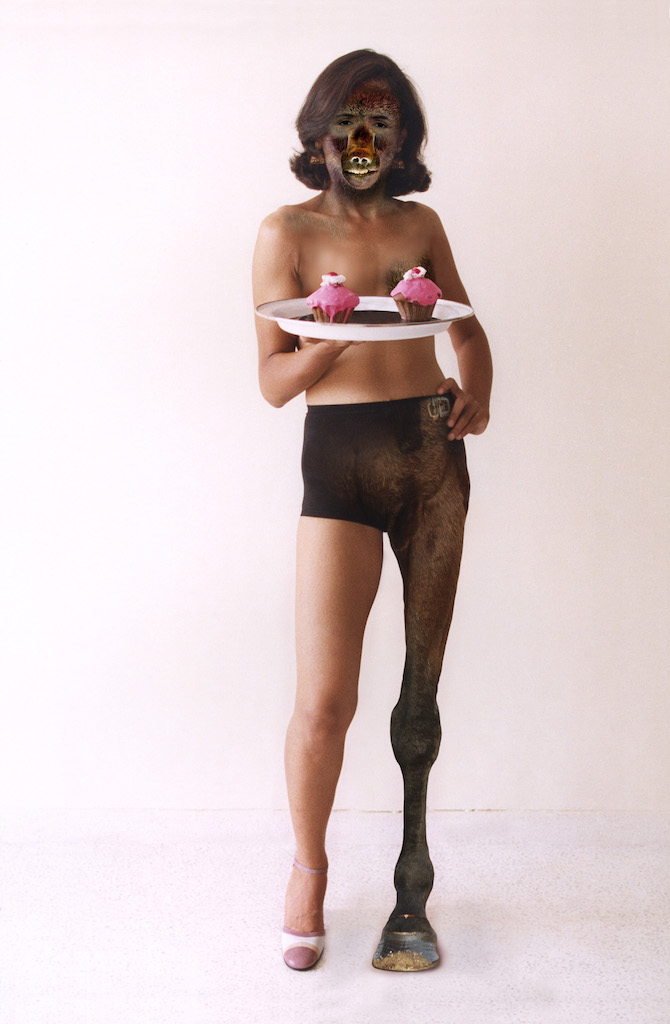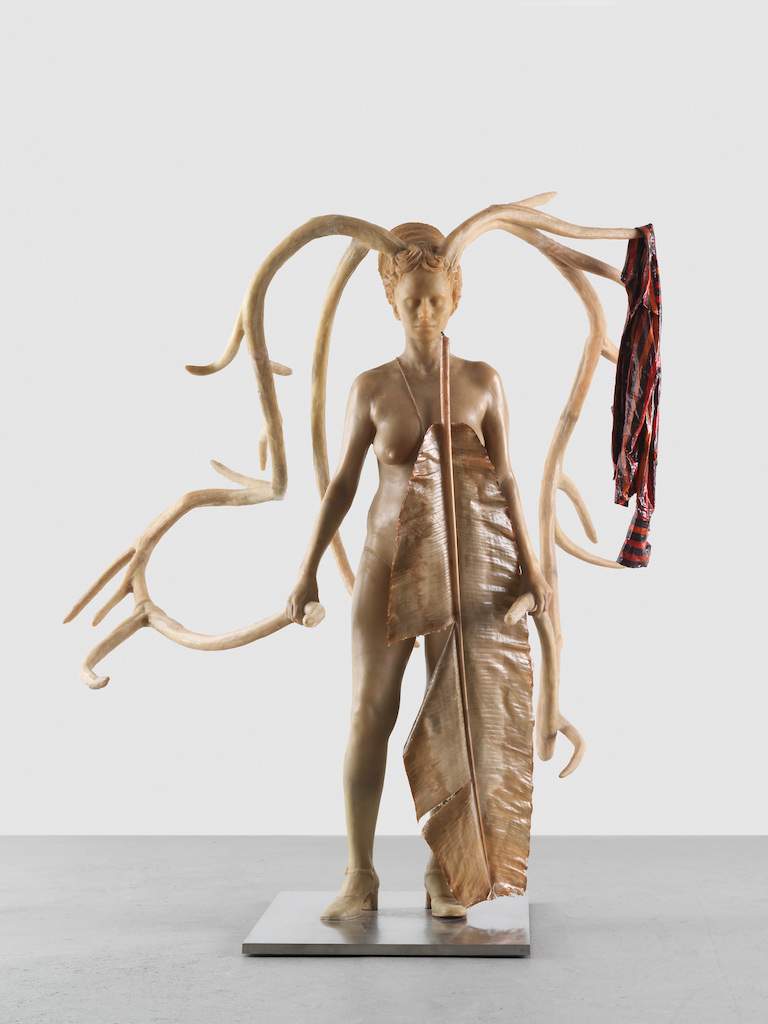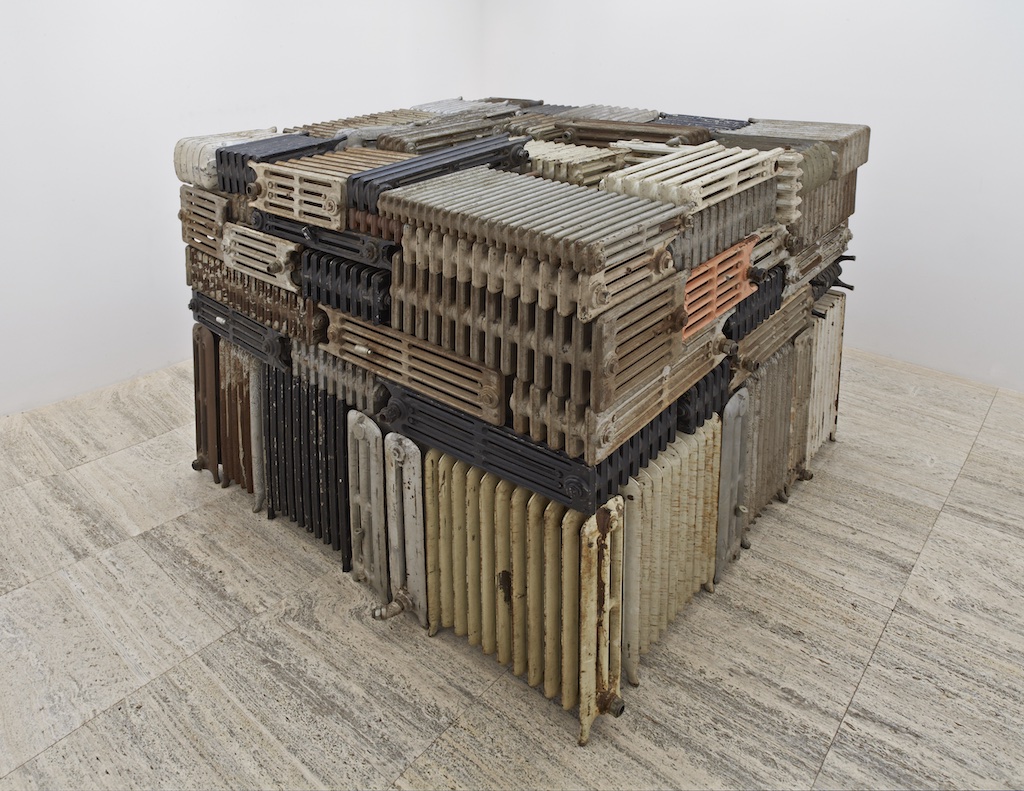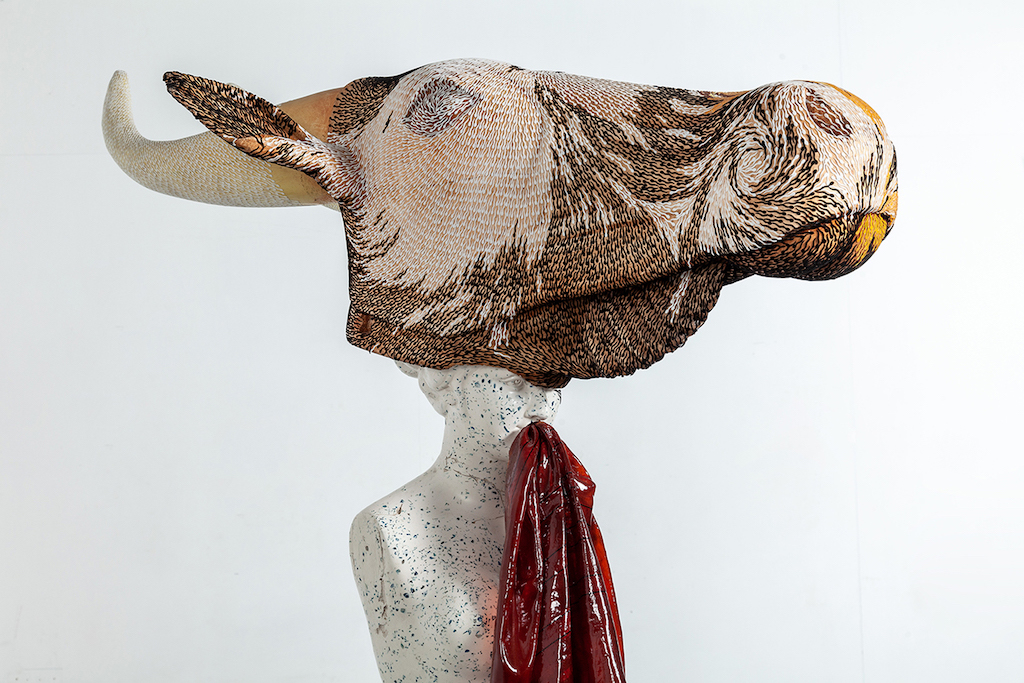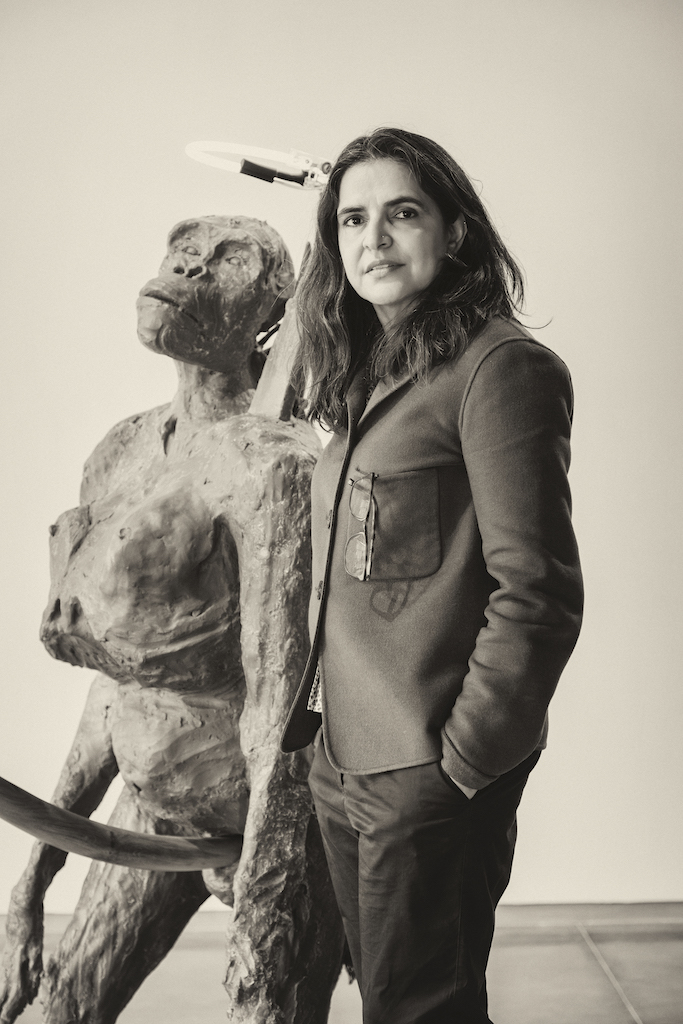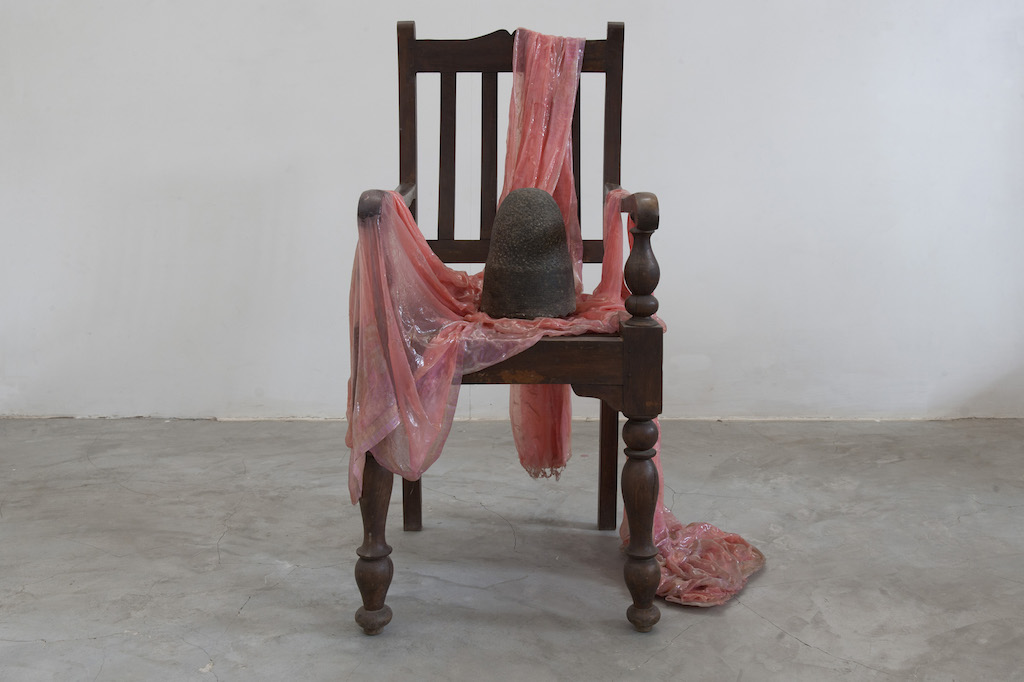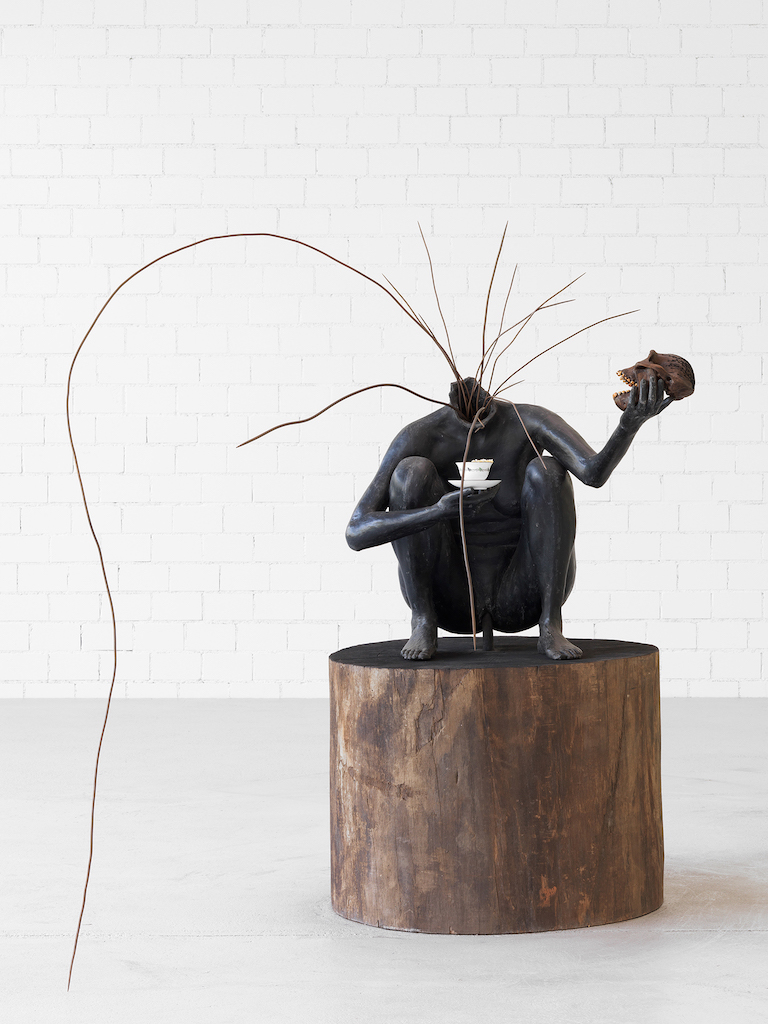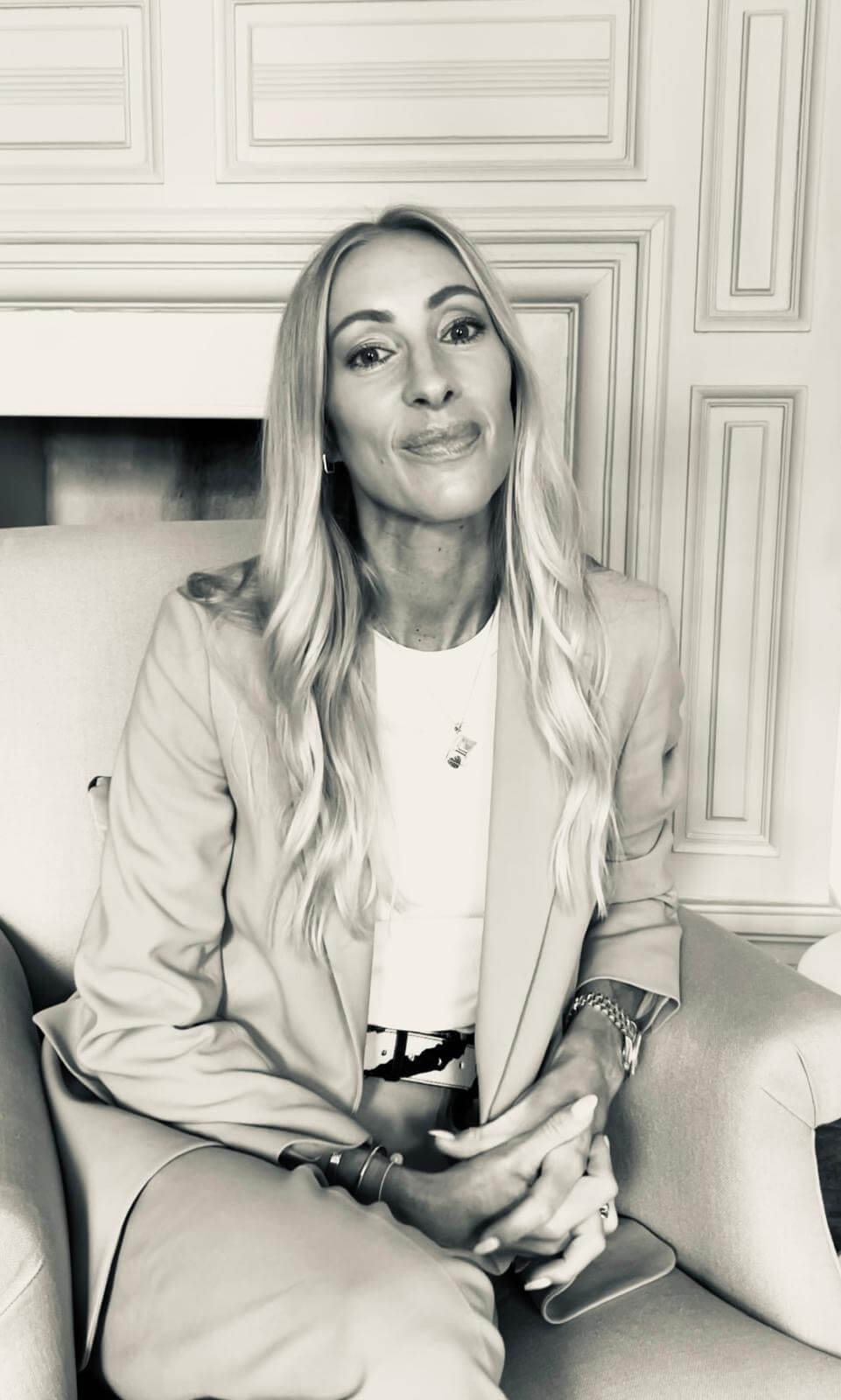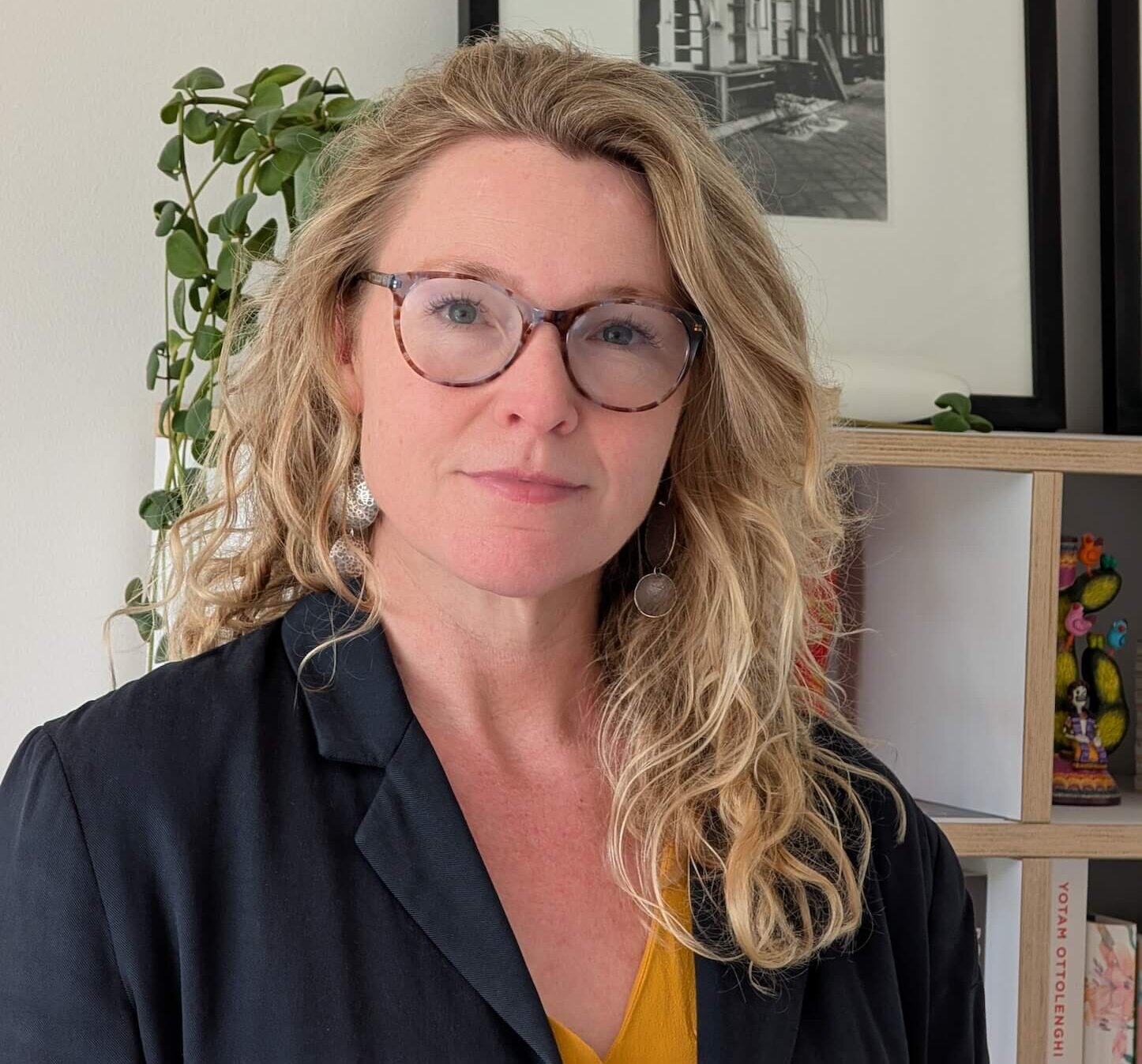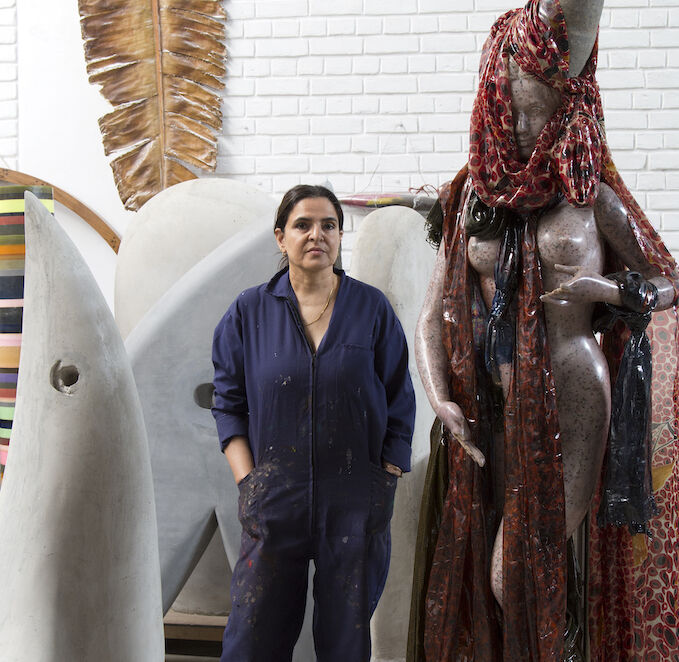

Interview Contemporary British-Indian Artist Bharti Kher
Take for example, the meticulously applied bindis applied to painted board, such as a glorious Untitled diptych, 2009, dazzling and illusory – neither painting or sculpture. Bindis frequently recur in many works of Kher’s, from abstract compositions to installations – a symbol traditionally associated with the third eye and a mark of marriage, but that has been transformed – sometimes through misappropriation – in meaning as eastern and western cultures have mixed over centuries. It’s this space ‘in between’ that Kher explores so well – between invented and found, imagined and real, collective and individual, spiritual and profane.
Taking over the Underground Gallery and gardens at the Yorkshire Sculpture Park from Saturday 22 June 2024 – Sunday 27 Apr 2025, Alchemies has at its centre Kher’s long fascination with creating hybrid figures – eerie, beguiling and powerful sculptures that combine casts made from real women’s bodies, with mythological, natural and fantastical elements, to create beings that the artist describes as “part truth, and part fiction, part me, and part you”. Also at the heart of the exhibition is Kher’s work Sari Women, a series that also refers to her own upbringing – her mother ran a sari shop in London where Kher would help dress mannequins at the weekend.
Just ahead of this major moment, Kher took time to talk to The Wick Culture and share more about her approach to her art, where she finds inspiration, why she loves dancing in her studio, and where to eat the very best Indian dhaba food in London.
THE WICK: You’ve described your process as ‘I hear it, taste it, eat it, write it, draw it’ – can you tell us more about this approach?
Bharti Kher: When I make art, I approach the object in the same way as I interact through the world: with my 5 senses awake and open. To be present with things as they are and hear the tone of what it is: with memories and stories and experience. Everything is energy and moves through us and around us.
TW: How do you take stock of this?
BK:
I love to remind myself that the snake hears with its tongue and infra radiation to locate the heat of another; an elephant uses its feet to hear over long distances and its trunk to sense; the whale uses low frequency sound to communicate with other whales 10,000km away; bats navigate using echolocation: their mouths produce sounds that bounce off objects. A shrimp has 14 types of photoreceptors that allow in light; an octopus can see in the darkest of waters; bees can sense the earth’s magnetic field and predict storms; it is said that animals fled upland in tsunami and birds gave warnings to humans who could not hear or heed the warnings. Mankind’s hubris is that we think we know everything and art I think, always tell us that we don’t.
TW: Your work often deals with the space ‘in between’. Do you see this space as also being a fertile space for creativity?
BK:
Yes, the 3rd space is a place of the unknown. Middle grounds are also good, but in between spaces are areas where grey and matter collide. They are narrower and literally slits in which secrets lie. They collapse into themselves. To be neither nor, either this or that is the space for growth and learning. It’s also a freedom from definitive labels or answers and I like that. The way we live in our world is never fixed.
TW:
Many of your works return to certain Indian emblems, motifs, and materials – how do you choose these?
BK: They choose me.
TW:
You divide your time between London and New Delhi; what prompted your move to New Delhi some decades ago, and how has the art scene evolved there since – you co-founded Khoj, which continues to offer great opportunities for artists today.
BK:
I moved to Delhi in 1993 after I met my husband Subodh, and we just stayed. I fell in love with the country, the kids went to school, we built our studios and friendships and a life there. The art scene has evolved in leaps and bounds and that’s encouraging but there is still much work to do and bureaucracy to untangle. We have over 800 museums in India but most of them barely function let alone as spaces for the public. But there are fantastic museums now such as the Bihar Museum in Patna. It gives me hope but it’s a drop in the ocean. I was the Chairwoman of Khoj for 13 years.
“West Yorkshire was the heart of the textile trade in the UK. It seemed fitting to send the sari works to YSP and in fact there is much use of fabric and clothes in my work.”
